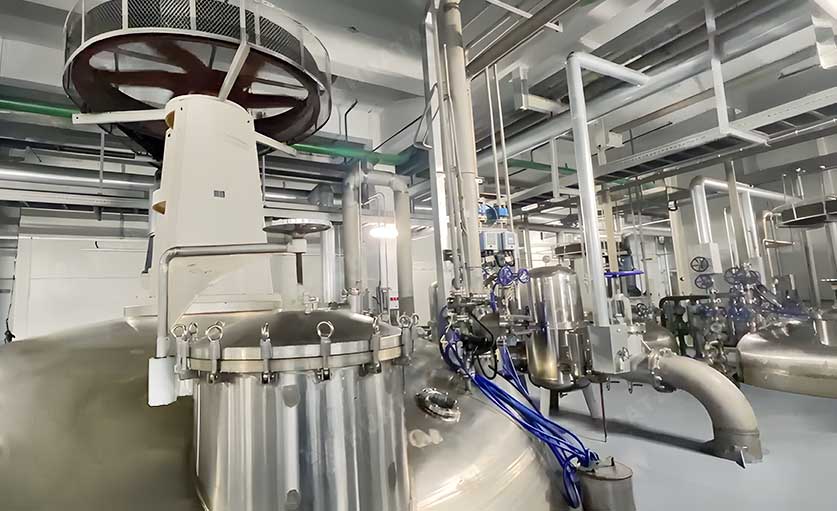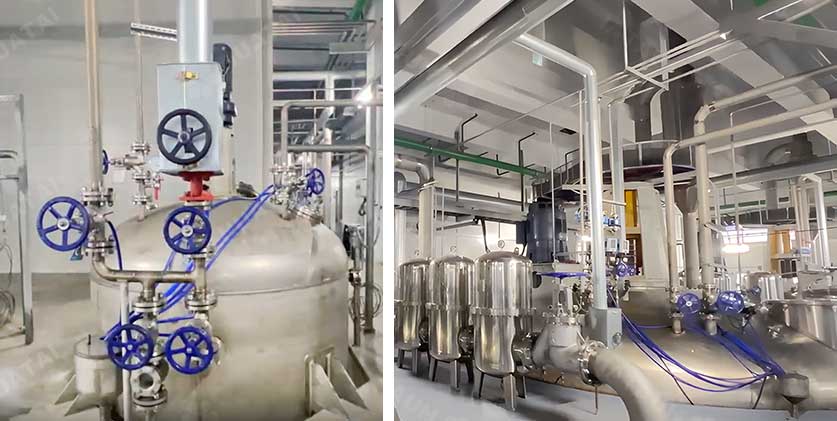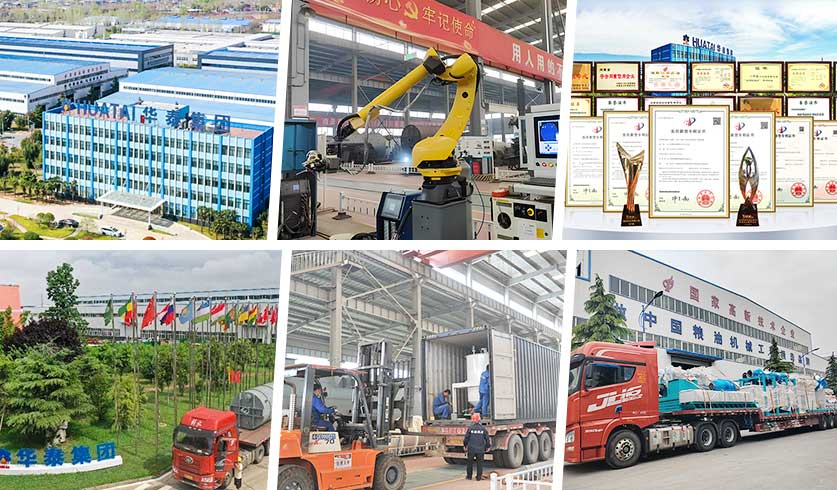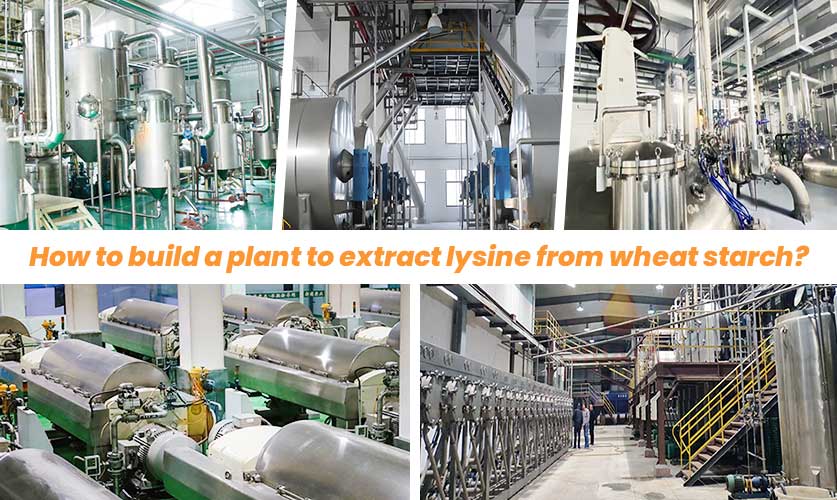
Huatai can provide turnkey projects with an annual production capacity of 5,000 to 100,000 tons of lysine. Huatai’s wheat starch lysine extraction equipment features readily available raw materials, simple processing, reasonable pricing, and customizable features.
Lysine is an essential amino acid that plays a key role in nutritional metabolism.
Lysine’s core functions and benefits include promoting growth and development, regulating health, and having broad market prospects in industrial and feed applications.

The principle of deep processing of lysine from wheat starch is mainly achieved through biological fermentation. The specific process is as follows:
Raw material preparation: First, wheat is processed into wheat starch, which is the main raw material for lysine production1.
Biological fermentation: Utilize the ability of specific microorganisms (such as bacteria and yeast) to metabolize carbon sources (such as glucose) under appropriate culture conditions to over-synthesize lysine. The advantage of this method is that it can produce high-purity lysine, and the yield can be optimized by genetically engineering strains2.
Fermentation process: During the fermentation process, microorganisms convert carbon sources such as glucose into amino acids, including lysine. The fermentation strain has a high acid production rate, and the fermentation conversion rate can reach more than 70%1.
Extraction and purification: After the fermentation is completed, the fermentation broth needs to be extracted and purified to obtain a high-purity lysine product2.
Through the above steps, wheat starch is deeply processed into lysine and is widely used in food, medicine and other fields.
Lysine production is primarily based on fermentation, a process in which microorganisms (such as genetically engineered bacteria like Corynebacterium glutamicum and Escherichia coli) convert carbon and nitrogen sources into lysine.
Fermentation
– Seed Expansion: Select a superior strain, such as Corynebacterium pekinensis AS1.563, and activate it on slant culture. Then, use secondary or tertiary seed culture depending on the fermenter size. The culture temperature is controlled at 30-32°C for 8-11 hours.
– Fermentation Process: The temperature is maintained at 32°C during the early stages of fermentation and at 30°C during the middle and late stages. The pH is maintained between 6.5 and 7.5. Nitrogen sources are controlled by feeding ammonium sulfate, and aeration and stirring are used to maintain dissolved oxygen levels. The fermentation cycle typically lasts 30-40 hours, and fermentation ends when the lysine content reaches a certain level.
Extraction and Purification
– Fermentation Broth Pretreatment: The fermentation broth is first centrifuged or treated with a flocculant such as polyacrylamide to precipitate the cells. Oxalic acid or sulfuric acid is then added to remove impurities such as calcium ions.
– Ion Exchange: An ammonium-type strong acid cation exchange resin is used, typically in a three-column series configuration to improve yield. The fermentation broth is adsorbed onto the column, then washed with water to remove impurities. Lysine is then eluted with 3.6%-5.4% ammonia solution.
– Concentration and Ammonia Removal: The eluate is large in volume, low in lysine content, and high in ammonia. It is concentrated by single-effect evaporation, with ammonia vapor recovery. The concentrate is adjusted to a pH of approximately 4.9 with concentrated hydrochloric acid and further concentrated to a desired concentration.
– Crystallization and Separation: The concentrate is placed in a stirred tank and stirred at approximately 5°C for 16-20 hours to allow crystallization. The concentrate is then separated by centrifugation, and the crystals are washed with a small amount of water to remove the surface liquid.
Recrystallization and Drying: The crude crystals are dissolved in water and heated, decolorized with activated carbon. The filtered clear liquid is concentrated by vacuum evaporation and then placed in a crystallization tank for stirring and crystallization. After centrifugation, the crystals are dried at 60-80°C to a moisture content of less than 0.1%, then crushed and packaged.
Threonine fermentation offers low raw material costs and is environmentally friendly. Genetically engineered bacteria can significantly increase yields (currently, advanced strains have conversion rates exceeding 50%). By precisely controlling fermentation parameters and bacterial strain characteristics, modern lysine fermentation processes have achieved large-scale production, with single tank volumes reaching 500-1000 m³ and an annual production capacity exceeding 100,000 tons.
Henan Huatai Grain and Oil Machinery Co., Ltd. has specialized in the manufacturing of starch and grain processing equipment for over 37 years. With a 100,000-square-meter modern production facility, equipped with advanced equipment such as laser cutting machines, fully automatic welding robots, and CNC precision machining centers, we produce over 200 large-scale grain processing lines annually.

Huatai Workshop
Huatai Oil Machinery is a leading manufacturer and supplier of starch processing equipment in China. We offer affordable equipment and cost-effective starch production processes. We have implemented numerous starch processing plant projects worldwide and provide customized production solutions. We welcome inquiries from customers.

If you want to build a wheat starch lysine plant, the conditions are relatively high, because to build a wheat starch lysine plant, you need to meet the following hard conditions: 1. High capital requirements, 2. There is government-approved land that meets the requirements, 3. There is a stable supply and sales market for raw materials (wheat or other crops with high starch content).
Based on our many years of experience in the industry, we can provide you with a customized wheat starch lysine plant solution based on the production capacity, land area and funds of your starch plant.
Therefore, please provide us with detailed information about your request to facilitate our communication and provide you with a more detailed quotation:
1) Is the starch raw material you want to process wheat? If you want to process other raw materials, please provide other raw material types;
2) The tonnage of wheat or other starch that needs to be processed every day; (This is very important to us. We will customize different process drawings and equipment lists for you according to your production requirements.)
We hope you can provide as detailed information as possible so that we can provide you with equipment quotation, flow chart, equipment configuration list and other services. Thank you.